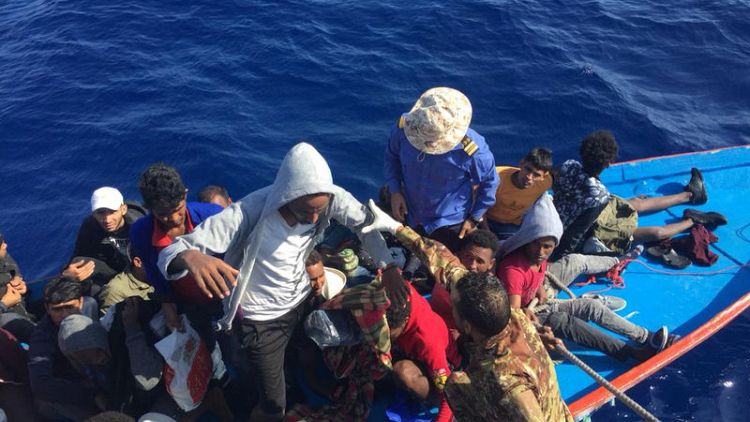By Aidan Lewis
TRIPOLI (Reuters) - After three days at sea trying to reach Europe, Demba Dembele was intercepted by Libya's EU-backed coastguard and returned to Tripoli – where, like dozens of other migrants, he got in a taxi and set off into the city.
For years, migrants sent back to Libya have been routinely transferred to government-affiliated detention centres notorious for squalid conditions and abuse.
Now, with several centres closing, some migrants are being allowed to walk free when they disembark, though they face an uncertain fate in a country shaken by renewed conflict over the past six months.
Dembele, a 28-year-old from Mali, had twice tried to get to Europe. After his first attempt failed, he spent three months in detention where he said he saw guards firing on migrants who tried to escape on two occasions.
"The first time, people forced the door to get out and they shot at them … they beat people," he said. One Liberian man was shot dead. "It was done in front of me."
Smugglers' boats still leave frequently for Europe, but the proportion of migrants being intercepted and returned to Libya has risen over the past two years during an Italian-led, EU-backed push to cut off crossings that has drawn sharp criticism from rights groups.
This has coincided with a collapse in the networks that sent more than 600,000 across the central Mediterranean from 2014-2017, as armed groups seeking to clean up their image have moved away from the trade. Just 8,400 migrants have made the crossing to Italy so far this year, and 7,400 have been intercepted and returned, according to U.N. data.
But the shift has made Libya even more brutal for migrants who remain, exposing them to increased levels of abuse and extortion by smugglers struggling to make money in a shrunken market, researchers and aid workers say.
Since April, there has been sustained fighting in western Libya after eastern-based forces led by Khalifa Haftar made a bid to seize Tripoli.
A 49-year-old Nigerian on the same boat as Dembele, said he had been in Libya for four years, and was working in a cellophane factory in southern Tripoli before the recent fighting began. "It was just the war that made me decide to leave," the Nigerian said.
MIGRANTS ENLISTED
Detention centres nominally under the Tripoli-based, internationally recognised government are controlled by armed groups now involved in the fight against Haftar, and some migrants have been enlisted in the war effort, aid workers and rights groups say. A Reuters reporter saw migrants moving weapons at an armed group base not far from the front line in southern Tripoli.
The centres have also become targets. In July, more than 50 migrants were killed in an air strike on a centre in Tajoura, close to where Dembele disembarked. Those who fled the strike have overwhelmed a facility designed by the U.N. refugee agency, UNHCR, for refugees and asylum seekers, which has been plagued by problems since opening late last year.
The Tajoura detention centre took in more migrants after the strike but is no longer accepting new arrivals, a coastguard official said. Centres in Al-Khoms and Misrata have shut after international pressure calling for their closure.
Though Dembele and more than 80 other African migrants who left in taxis avoided immediate detention, aid workers worry that some may be even more vulnerable to underground smugglers if they are not taken to the centres, where international organisations at least have sporadic access.
UNHCR, which has struggled to evacuate people from Libya and recently started transferring refugees to Rwanda, has said some migrants try to bribe their way into centres in the hope they will be resettled. [nL5N27268R]
Libya has an estimated migrant population of 640,000. The centres house just 5,000, but turnover can be rapid. In the past, centres that were closed have reopened, or new centres have sprung up at different sites.
After closing the centre in Misrata last week, Libyan authorities transferred more than 100 refugees and migrants to two other centres with a record of "abuses, violence, exploitation and forced disappearances", said Medecins Sans Frontieres (MSF), which provides care for migrants detained in Libya.
"They are moved from one detention centre to another, seeing conditions go from bad to worse in an endless cycle of despair and violence," said Sacha Petiot, MSF's mission head.
(Editing by William Maclean)
